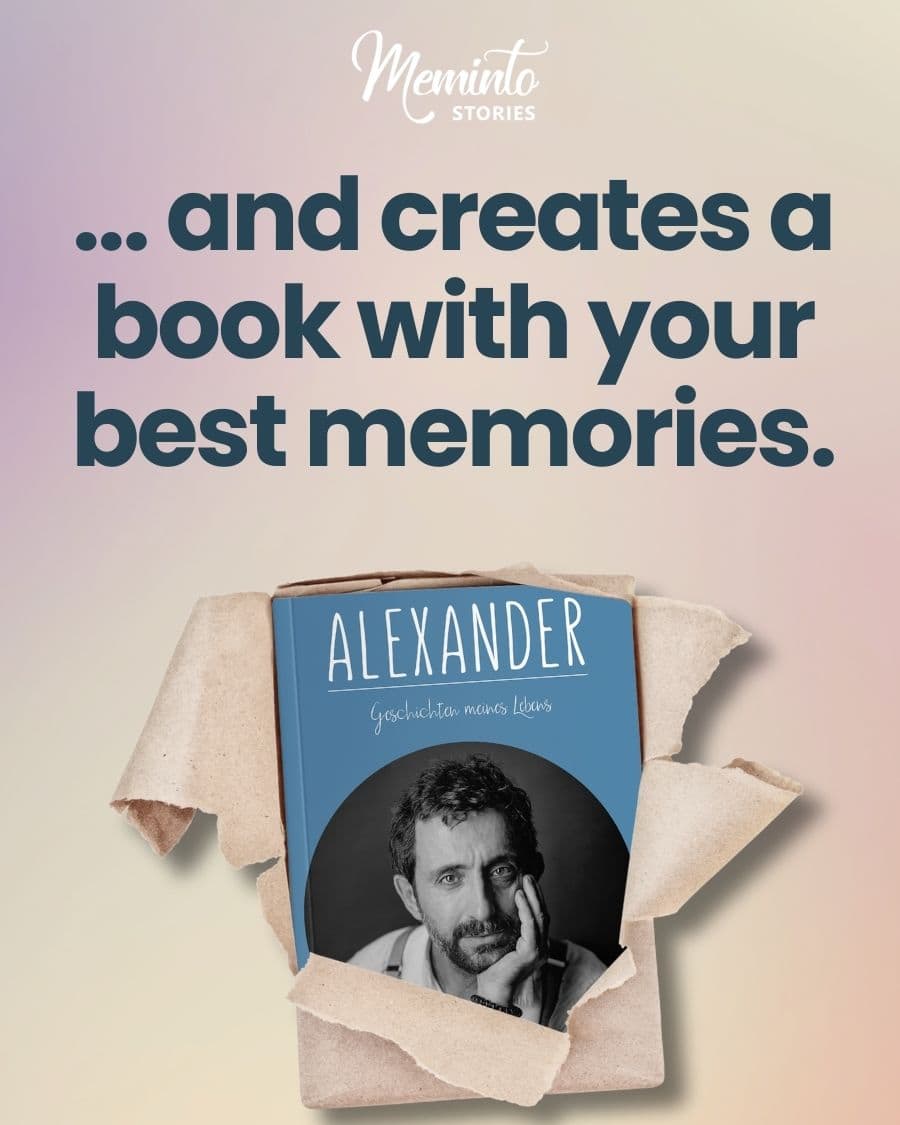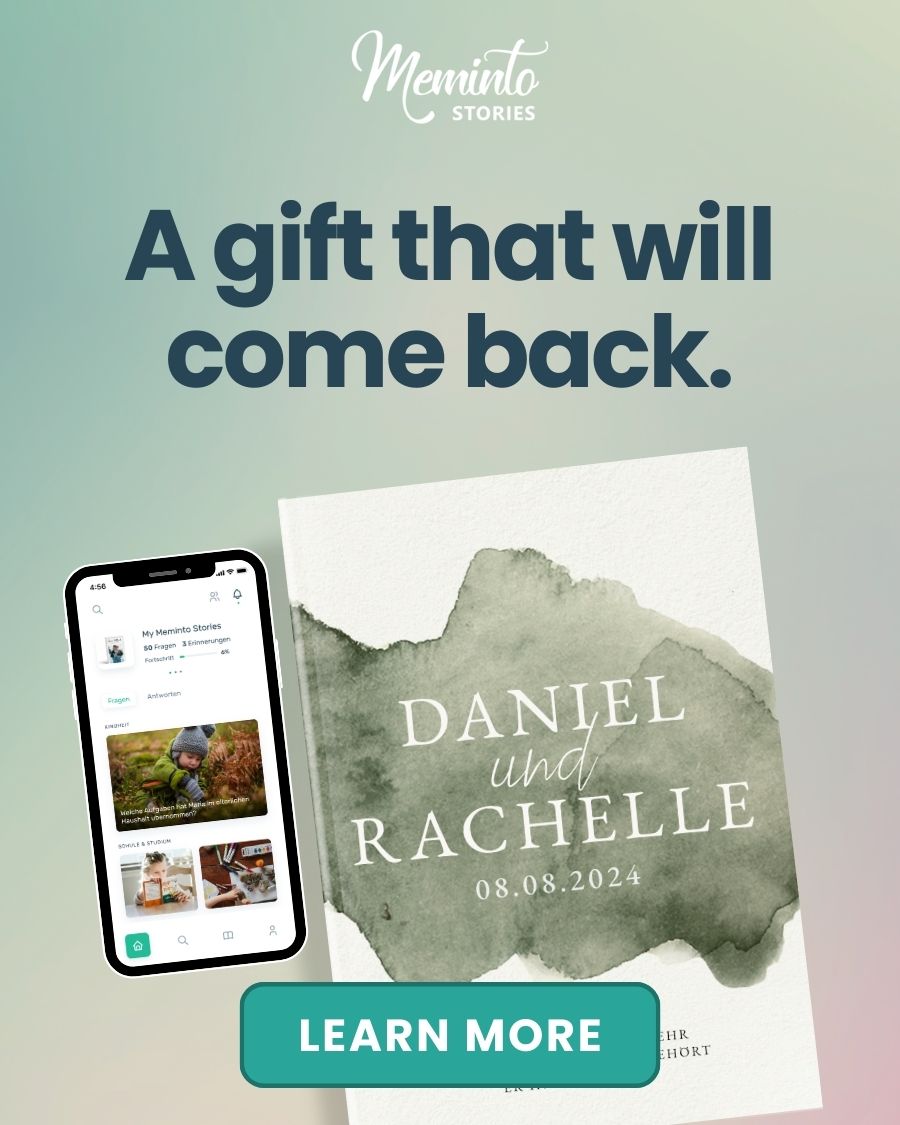Reconstructing memories for writing is about piecing together fragmented recollections into a meaningful story. Our brains don’t store memories like recordings but instead rebuild them using emotions, context, and related experiences. This natural process allows you to recall key details and create narratives that feel true to your experiences.
Here’s how you can start:
- Understand Memory Reconstruction: Memories are dynamic and influenced by schemas (mental frameworks). They combine emotions, sensory details, and context.
- Use Prompts to Recall Details: Photos, music, scents, or specific questions can unlock forgotten moments.
- Capture Sensory and Emotional Elements: Focus on what you saw, felt, or heard to bring scenes to life. Emotional depth often remains intact even when details are unclear.
- Organize Memories: Sort fragments by themes or timelines, and use patterns to identify deeper connections.
- Fill Gaps Thoughtfully: Use logical reasoning and context to reconstruct missing details while staying true to the emotional essence of your story.
- Be Transparent: Acknowledge reconstructed elements to build trust with readers.
- Turn Memories into a Book: Tools like Meminto Stories help organize and enhance your narrative with multimedia and collaboration features.
How Memory Reconstruction Works
Your brain doesn’t work like a video recorder. Instead of storing perfect, detailed recordings of events, it pieces together memories from bits of information, emotions, and sensory details gathered at different times and in different ways.
When you try to recall an event, your brain pulls these fragments from various storage areas. For instance, the emotions tied to the memory might be stored in one part of the brain, while visual details are in another, and sensory impressions, like smells or sounds, are kept somewhere else. Your brain then stitches these fragments together into what feels like a complete memory.
Here’s the catch: every time you recall a memory, it’s reshaped. Current emotions, new knowledge, and recent experiences subtly influence it. This is why memory is so dynamic – it’s less about exact preservation and more about making sense of the past in light of the present. For example, you might vividly recall your grandmother’s kitchen walls as yellow, but that detail could come from a photo you saw later, not from your actual childhood experience.
Recognizing this process helps us understand how schemas – mental frameworks – play a role in organizing these fragments into something coherent.
How Schemas Shape Memory Recall
Schemas are like mental blueprints your brain uses to organize and interpret information. They’re built from repeated experiences and help you make sense of the world by filling in the blanks when details are missing.
Imagine trying to remember a childhood family dinner. Instead of retrieving a perfect snapshot, your brain relies on your schema for “family dinners.” If you usually ate in the dining room, your brain might automatically place the memory there, even if that specific meal took place in the kitchen. These frameworks draw from patterns in your past and even broader cultural knowledge, enriching your memories with familiar details.
But here’s the tricky part: schemas can blur the line between what actually happened and what feels like it should have happened. The challenge, especially for writers, is to distinguish between the emotional truth of a memory – those vivid, significant moments – and the schema-based details that might not be entirely accurate. Both have their place in storytelling, but understanding this distinction helps you write with greater honesty and depth.
Why Memory Reconstruction Is Natural and Helpful for Writing
The way your brain reconstructs memories isn’t just a quirk of human biology – it’s a powerful tool for storytelling. This natural process allows you to capture the emotional essence of your experiences, even when the finer details are fuzzy.
When your brain fills in gaps, it doesn’t do so randomly. The reconstructed details usually align with the time, place, and emotional tone of the original event. This ability makes memory reconstruction incredibly useful for creating vivid settings and authentic atmospheres in your writing.
What tends to stay most intact in your memories is the emotional core – the feelings and significance of a moment. As you piece together sensory details like the smell of fresh coffee, the scratch of a wool sweater, or the sound of rain on a window, you might find yourself recalling more than you initially thought. These reconstructed elements can breathe life into your narratives, making them feel rich and immersive.
This approach is especially valuable for memoirs and personal stories. It respects both factual accuracy and emotional truth, ensuring that what you share feels genuine. You’re not fabricating events; you’re using your brain’s natural ability to reconstruct memories to tell your story as fully as possible.
The key is being open about the process. If you acknowledge that some details are reconstructed rather than exact, it actually strengthens your writing. Readers appreciate honesty, and by being transparent, you show your commitment to authenticity while embracing the inherent limitations of human memory.
Collecting and Organizing Memory Pieces
Once you grasp how memory reconstruction works, the next step is pulling together the key pieces of your past for your book. Think of this phase as digging through the layers of your life to uncover meaningful fragments and see how they fit together.
The goal isn’t to recall everything perfectly but to gather whatever pieces come to mind, no matter how small or incomplete they seem. Even a tiny detail can unlock a flood of memories or create an emotional anchor. To help this process along, targeted prompts can be incredibly effective.
Using Prompts to Trigger Memory Recall
Prompts are like keys that open up different corners of your mind. The more varied your prompts, the better chance you have of triggering visual, sensory, emotional, or auditory memories.
Photo albums and old documents are often the most powerful visual triggers. That faded photo from your eighth birthday might not show much, but it could bring back the taste of chocolate cake, your mom’s laugh, or the way sunlight poured into the kitchen that day. Pay attention to the background – expressions, furniture, or even clothing styles can stir unexpected memories.
Other prompts, like music, physical objects, or scents, can also spark vivid recollections. Try creating playlists from specific time periods or life phases. A song from high school might transport you to a summer road trip or a school dance. An old cookbook could remind you of family dinners, and handling it might even recall the feel of the tablecloth or the sound of your grandmother’s voice.
Ask yourself specific, targeted questions to approach memories from different angles. Instead of a broad question like, “What happened at my wedding?” dig deeper: “What did the flowers smell like?” or “What’s the first thing that went wrong?” These focused questions often lead to rich, unexpected details.
Recording Sensory and Emotional Details
Once a memory surfaces, it’s important to capture it quickly. Memories can be fleeting, especially if you overanalyze or get distracted.
Focus on sensory details first. What did you see, hear, smell, taste, or touch? These elements often bring memories to life for readers, allowing them to experience your story rather than just read it. For instance, don’t just say the room was cold – describe the way your breath fogged the air or how the chill bit at your fingertips.
Don’t skip over emotional details. How did the moment feel? Were you anxious, thrilled, or overwhelmed? Go beyond surface emotions. For example, were you so nervous your palms were sweaty, or was it the kind of anxiety that made your voice catch? Was your excitement bubbling over, or was it quiet and steady, like holding your breath before something big?
Capture everything immediately, even if it’s messy. Use whatever method works – voice memos, a notebook, or typing on your phone. Don’t stress about accuracy at this stage. If you think your childhood bedroom walls were blue but aren’t sure, jot down “blue walls (maybe?).” That uncertainty can be addressed later when shaping your narrative.
Organizing Fragments for Story Structure
Once you’ve gathered your memory pieces, the next step is turning them into a cohesive story. Memories rarely come in neat, chronological order. They’re more like puzzle pieces that need sorting and connecting.
Begin with broad categories instead of detailed outlines. Group memories by life phases (childhood, college, early career), themes (family, challenges, growth), or locations (the beach house, your first apartment). These categories don’t have to be perfect – they’ll evolve as you work.
Create a loose timeline, but don’t get hung up on exact order. Sometimes emotional flow is more important than strict chronology. For instance, a memory from age ten might resonate with something from age sixteen. If they connect thematically, they may belong together in the same chapter.
Look for threads that tie memories together. Maybe certain memories share a common element, like the smell of your mother’s perfume, thunderstorms, or moments of pride or embarrassment. These patterns often hint at deeper themes that can shape your book’s structure.
Use a simple coding system to keep track of details. For example, you could use one color for sensory descriptions, another for emotional insights, and a third for dialogue or conversations. This helps you spot patterns and ensures your narrative has a good balance of elements.
Think about your audience and purpose as you organize. If your book is for your grandchildren, you might focus on family traditions and values. If it’s for a wider audience, you might highlight universal themes like resilience, love, or transformation.
This phase is where your book starts to take shape. Take your time arranging your memories thoughtfully – it’ll make the writing process much smoother later.
Filling Memory Gaps with Writing Techniques
Even with the clearest prompts or memory triggers, it’s natural to encounter moments where the details feel hazy. Maybe you recall the emotional weight of a conversation with your father but not his exact words. Or perhaps you can picture your first day at a new school, but the smaller details remain elusive. These gaps don’t have to derail your story – they can actually be opportunities to use creative writing techniques that stay true to your experience while crafting a compelling narrative.
By combining your memories with context clues and logical reasoning, you can reconstruct missing pieces in a way that feels genuine. Let’s explore how to build scenarios and enhance them with sensory and emotional details.
Building Scenarios Based on Context
When some details are missing, start with what you do remember and expand from there. Use behaviors, settings, and patterns to logically fill in the blanks. For example, if you remember arguing with your teenage daughter but can’t recall the exact words, think about how she typically reacted at that age. Did she storm off to her room? Roll her eyes and mutter something under her breath? These familiar behaviors can help you recreate dialogue and actions that feel authentic.
Cause-and-effect thinking is another helpful tool. If you remember feeling embarrassed after a family dinner but can’t pinpoint why, consider similar situations. Did your mom share an awkward childhood story? Did your uncle crack an inappropriate joke? These reconstructions should align with your family’s dynamics and your personality at the time.
You can also use historical context to add believable details. For instance, if your memory is set in 1978 during your first year of college, you might include details like long registration lines, typewriters in dorm rooms, or the music playing on the radio. These elements anchor your story in a specific time and place, even if your personal recollections are incomplete.
Adding Sensory and Emotional Details
Sensory details can make a memory feel vivid, but what if you don’t recall exactly how something looked, sounded, or smelled? You can draw on similar experiences or general knowledge to fill in the gaps. For example, if your memory takes place during a Midwest winter, you can describe the bite of cold air, the crunch of snow, or the way your breath fogged up in the freezing temperatures.
When it comes to emotions, think about how you typically react in similar situations. If you remember being nervous before a job interview but can’t recall the physical sensations, reflect on how anxiety usually manifests for you. Did your palms sweat? Did you feel butterflies in your stomach or fidget with your hands? These reconstructed details should match your typical stress responses.
You can also use sensory and emotional elements to enhance the tone of a memory. If the moment felt peaceful, you might describe warm sunlight, the distant sound of children playing, or the comforting weight of a loved one’s hand. These additions deepen the emotional truth of your memory without contradicting it.
Being Clear About Memory Reconstruction
When you reconstruct details, being upfront about the process builds trust with your readers. Acknowledging the natural limits of memory doesn’t weaken your story – it actually strengthens it by showing your commitment to emotional honesty over perfect recall.
Establish a consistent way to signal reconstructed elements. Phrases like “I imagine she must have…” or “Knowing my father, he probably…” gently indicate that you’re filling in gaps thoughtfully rather than claiming absolute accuracy. This approach reassures readers that you’re handling these moments with care.
It’s also important to differentiate between levels of uncertainty. For example, being unsure whether a car was blue or green is a minor detail, but questioning whether a particular conversation even happened is more significant. Use language that reflects the weight of the uncertainty in your narrative.
Finally, consider your audience and purpose when deciding how explicit to be about reconstructed details. A memoir for publication might require more transparency than a family history written for relatives. However, some level of openness is always valuable for maintaining credibility.
Remember, the goal of reconstruction isn’t to fill space or create unnecessary drama. Every added detail should support the emotional truth and themes of your story. If a detail feels forced or doesn’t align with your experience, it’s better to leave it out or acknowledge the gap directly.
Reconstructing memories is a natural part of storytelling. Even the most rigorously researched histories involve interpretation and filling in gaps. What matters most is that your reconstructions honor the essence of your experience and help readers connect with the meaning behind your memories. Thoughtful techniques like these let you bridge the gaps while staying true to the heart of your story.
sbb-itb-e3574dd
Turning Reconstructed Memories into a Story
Once you’ve pieced together fragments of memory, the next step is crafting them into a story that feels complete and meaningful. The goal isn’t just to record events but to help readers grasp the significance of those experiences. By blending vivid recollections with reconstructed details, you can create a narrative that resonates on both an emotional and intellectual level.
Blending Real Memories with Reconstructed Details
The best memory-based stories combine what you remember clearly with details you’ve had to reconstruct. This mix creates a fuller picture while staying grounded in the moments you recall most vividly.
Start with your strongest memories – those moments you can still see, hear, or feel clearly. For example, you might remember your grandmother handing you her wedding ring with perfect clarity, but the conversation leading up to that moment might be fuzzy. Use those vivid memories as anchors, and build the surrounding details around them.
When weaving reconstructed elements into your story, aim for a seamless flow. While it’s important to acknowledge that some details are reconstructed, you don’t need to interrupt the narrative constantly with disclaimers. Instead, establish early on that some parts of the story are based on inference or imagination, and let the readers follow along.
Consistency is key when blending real and reconstructed details. If you remember feeling nervous during a job interview, any added details – like fiddling with your pen or stumbling over words – should match that emotional state. This alignment makes your story feel psychologically real, even when some specifics are imagined.
Also, think about the pacing of your narrative. Sometimes, a reconstructed detail that isn’t historically precise can still be emotionally crucial. For instance, describing your father’s expression during a difficult conversation might involve some guesswork, but if it captures the essence of his personality and your relationship, it’s worth including.
Once you’ve aligned your memories and reconstructions, you can focus on bringing them to life with dialogue, settings, and internal thoughts.
Using Dialogue, Settings, and Internal Thoughts
These elements are the tools that transform a collection of memories into a story readers can immerse themselves in.
Reconstructed dialogue doesn’t need to be word-for-word accurate. Instead, focus on capturing the tone and essence of how people spoke. If your teenage son often responded with one-word answers and eye rolls, reflect that in the dialogue – even if you can’t recall his exact words. Pay attention to speech patterns and vocabulary, too. Your college professor likely spoke differently than your neighbor, and your younger self probably had a different way of expressing ideas than the person you are today.
Settings can often be reconstructed through logic and research. If you’re writing about your childhood bedroom but can’t remember the exact layout, think about the style of your family’s home and what was typical for that time. Setting details can also enhance the emotional tone of your story. A dimly lit room might amplify a feeling of sadness, while a sunny backyard might evoke a sense of warmth and nostalgia.
Internal thoughts are perhaps the easiest to reconstruct because they stem from your own patterns of thinking. Even if you can’t remember exactly what you were thinking in a given moment, you can draw on how you typically process emotions or make decisions. Internal dialogue also provides a natural way to signal uncertainty without disrupting the flow of your story. Phrases like “I probably hoped…” or “I must have thought…” let readers know you’re filling in gaps while keeping the narrative moving.
Keeping a Consistent Narrative Voice
Your narrative voice ties everything together, ensuring your story feels unified even as it moves between vivid memories and reconstructed scenes.
Decide on a temporal perspective and stick with it. Are you writing from your current point of view, reflecting on past events with the benefit of hindsight? Or are you trying to capture your mindset as it was during the events themselves? Both approaches work, but mixing them can confuse readers and dilute the impact of your story.
If you’re writing from your present perspective, you can include insights and connections you’ve gained over time. Writing from your past perspective, on the other hand, creates a sense of immediacy but requires you to stay true to what you knew and felt at the time.
Emotional honesty is another cornerstone of a consistent narrative voice. If you’ve established yourself as someone who uses humor to cope with tough situations, that should come through in both your vivid memories and reconstructed scenes. Similarly, the language and tone you use to describe events should feel like they come from the same person, regardless of whether you’re recounting a clear memory or filling in details.
Keep the balance between detail and pacing consistent as well. If you tend to linger on sensory details during emotional moments, apply that approach to both remembered and reconstructed scenes. This helps your story maintain a steady rhythm and keeps readers engaged.
Lastly, let your narrative voice reflect what matters most to you. Whether you’re emphasizing relationships, personal growth, or family dynamics, those themes should remain consistent throughout your story. This helps readers understand why these memories are important and why you’ve chosen to share them.
While consistency is important, your narrative voice doesn’t have to be static. It can evolve as your story progresses, especially if you’re covering a long period or significant personal changes. The key is to make that evolution feel intentional, so it enhances your story rather than distracting from it.
Using Tools to Turn Memories into a Book
The final step in your storytelling journey is transforming those cherished memories into a beautifully crafted book. While traditional methods often require juggling multiple tools, Meminto Stories simplifies the process, offering an intuitive way to go from recollections to a polished hardcover book. Building on your storytelling skills, let’s see how technology can help bring your memories to life.
Features of Meminto Stories

Meminto Stories provides a user-friendly platform to turn personal memories into lasting keepsakes. Typing out long narratives can feel daunting, so the platform includes an AI-powered speech-to-text feature. This allows you to simply speak your memories, and the system automatically converts your words into text. To ensure no detail is overlooked, it also offers guided prompts that help you recall both the events and the emotions tied to them.
What makes this platform stand out is its support for multimedia elements. You can enhance your story by adding photos, audio recordings, and even videos, creating a richer, more immersive experience. Plus, Meminto Stories offers customizable templates tailored to various themes like life stories, childhood memories, weddings, or family histories, giving your book a personal touch.
Organizing Chapters and Sections with Meminto
Piecing together scattered memories into a cohesive story can be tricky. Meminto Stories makes this easier by allowing you to create a table of contents and organize your book into chapters. Instead of sticking to a strict chronological order, you have the flexibility to sort your content by themes, such as relationships, locations, or life lessons. This thematic approach not only makes the book more engaging but also allows you to revisit and expand sections as new memories come to mind.
Collaborative and Personal Storytelling
Stories often gain depth when told from multiple perspectives, and Meminto Stories embraces this through its collaborative storytelling feature. Family members and friends can contribute their own memories, enriching the narrative with diverse viewpoints. For instance, Albert, the founder of Meminto, shared how his family came together to create a memorial book when his grandfather passed away:
“When my grandpa died, my whole family, 17 people in total, created this book. We simply answered questions about his life. I was able to read so many new stories about him that I didn’t know yet!”
This collaborative approach not only strengthens connections but also ensures that every memory, no matter how small, is preserved. Contributors can add their input in various formats – written text, voice recordings, or videos – making it easy for everyone to participate. With no limit on the number of contributors, Meminto Stories is ideal for large families or groups of friends looking to create a shared treasure of memories.
Conclusion and Key Takeaways
Memory reconstruction is a powerful way to turn scattered recollections into meaningful stories. It works by piecing together fragments, weaving in sensory and emotional details, and arranging them into a cohesive narrative. This process not only helps you tell a story but also connects with readers on a deeper, emotional level – even if not every detail is perfectly factual.
Writers often blend clear memories with reconstructed details to create narratives that feel authentic and engaging. Take Lila Quintero Weaver, for example. In her memoir, she started with moments she could vividly recall and expanded on them through research and reflection. As she wrote, more memories surfaced naturally. By using metaphors and prompts, she brought depth and emotional resonance to her story.
Transparency is key here. Letting readers know which parts of your narrative are reconstructed builds trust while giving you the freedom to explore the emotional truths behind your experiences. This balance between honesty and creativity allows for storytelling that feels both genuine and impactful.
Modern technology makes this process even more accessible. Platforms like Meminto Stories offer tools like guided prompts, AI-driven speech-to-text conversion, and organizational features to help you structure your narrative. They also enable collaboration, allowing friends and family to contribute their perspectives, enriching your story with additional layers of detail.
Start by jotting down fragments of memories as they come to you. Use prompts to dig deeper, and record your thoughts immediately. Set aside time regularly to reflect, as writing itself often sparks new recollections.
Your fragmented memories hold the potential for incredible stories. With the right techniques and tools, you can transform them into a narrative that captures both the facts and the emotions behind them. The journey from scattered memories to a finished book is now more achievable than ever.
FAQs
How can I make my reconstructed memories feel authentic and emotionally meaningful in my book?
When crafting memories for your book, aim to capture the emotions and essence of your experiences rather than getting bogged down by perfect factual accuracy. Focus on how those moments made you feel and let those emotions shape your storytelling.
Bring your memories to life by weaving in sensory details – describe what you saw, heard, or even smelled to pull readers into the scene. If certain aspects feel fuzzy, don’t hesitate to use your imagination to fill in the blanks, as long as you stay true to the emotional heart of the story. Emotional authenticity matters more than exact precision, helping you forge a stronger connection with your readers.
What are some helpful prompts for recalling and reconstructing fragmented memories when writing a story?
To piece together fragmented memories, try tapping into your senses. Specific smells, sounds, or textures can often spark vivid details. For instance, think about the scent of your childhood home, the melody of a favorite song, or the texture of a fabric you cherished. These sensory triggers can awaken memories deeply tied to emotions.
Another approach is to reflect on meaningful experiences. Ask yourself about cherished family traditions, an unforgettable vacation, or a moment that shifted your perspective. These prompts can help organize scattered memories into a flowing narrative. And where details feel hazy, let your imagination fill in the blanks – blending facts with creativity to breathe life into your story.
How does Meminto Stories make it easier to create shared family and personal stories?
Meminto Stories makes it easier than ever to create shared family and personal narratives by inviting multiple people to contribute their memories and perspectives to a single book. This collaborative method brings together a variety of voices, resulting in stories that paint a more complete picture of your family’s history.
With intuitive tools, Meminto Stories allows you to effortlessly collect, organize, and polish contributions. Whether through text, voice recordings, or video clips, everyone can take part in preserving treasured memories, crafting a legacy that future generations will cherish.

















